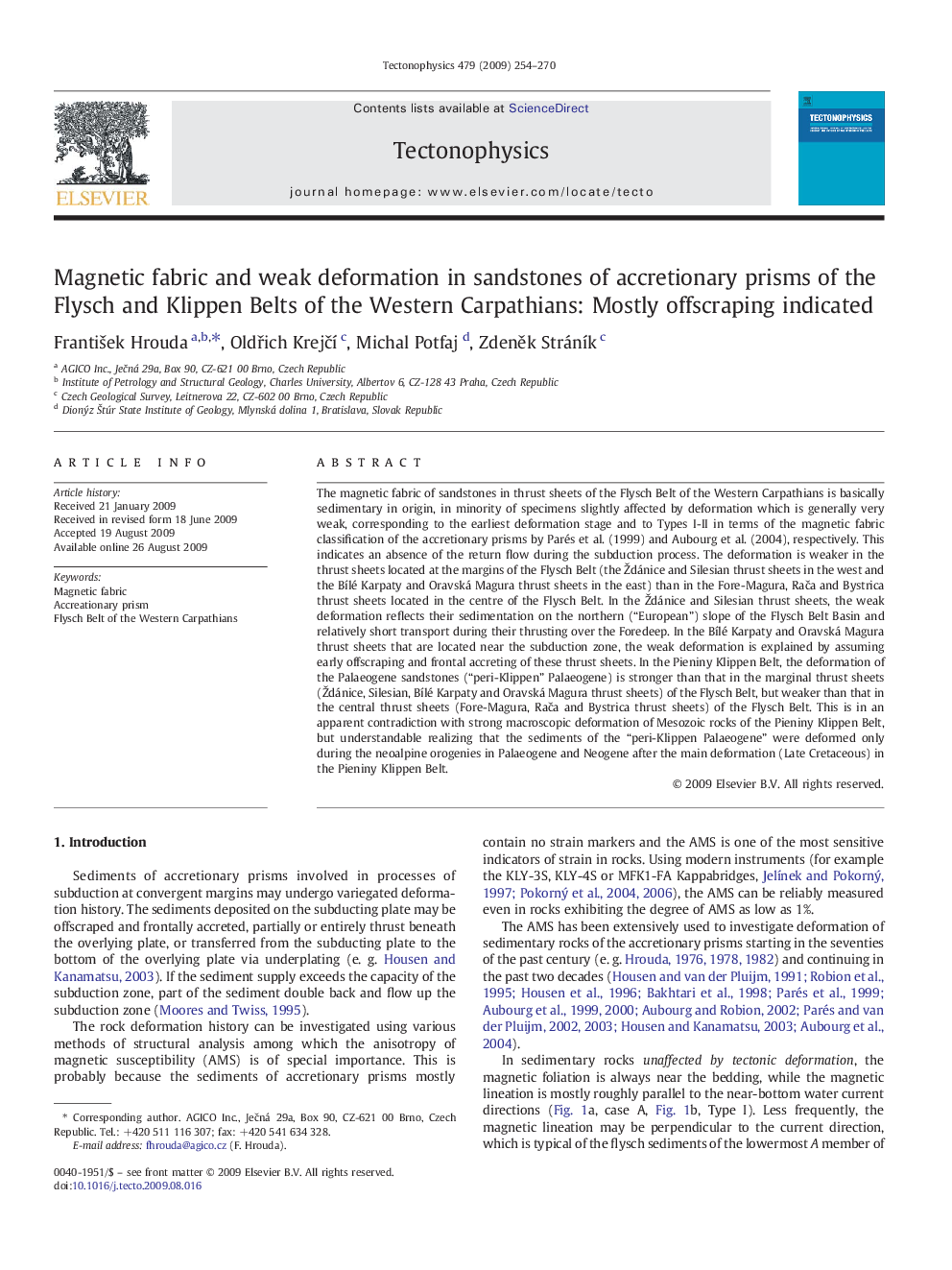| کد مقاله | کد نشریه | سال انتشار | مقاله انگلیسی | نسخه تمام متن |
|---|---|---|---|---|
| 4693743 | 1636877 | 2009 | 17 صفحه PDF | دانلود رایگان |

The magnetic fabric of sandstones in thrust sheets of the Flysch Belt of the Western Carpathians is basically sedimentary in origin, in minority of specimens slightly affected by deformation which is generally very weak, corresponding to the earliest deformation stage and to Types I-II in terms of the magnetic fabric classification of the accretionary prisms by Parés et al. (1999) and Aubourg et al. (2004), respectively. This indicates an absence of the return flow during the subduction process. The deformation is weaker in the thrust sheets located at the margins of the Flysch Belt (the Ždánice and Silesian thrust sheets in the west and the Bílé Karpaty and Oravská Magura thrust sheets in the east) than in the Fore-Magura, Rača and Bystrica thrust sheets located in the centre of the Flysch Belt. In the Ždánice and Silesian thrust sheets, the weak deformation reflects their sedimentation on the northern (“European”) slope of the Flysch Belt Basin and relatively short transport during their thrusting over the Foredeep. In the Bílé Karpaty and Oravská Magura thrust sheets that are located near the subduction zone, the weak deformation is explained by assuming early offscraping and frontal accreting of these thrust sheets. In the Pieniny Klippen Belt, the deformation of the Palaeogene sandstones (“peri-Klippen” Palaeogene) is stronger than that in the marginal thrust sheets (Ždánice, Silesian, Bílé Karpaty and Oravská Magura thrust sheets) of the Flysch Belt, but weaker than that in the central thrust sheets (Fore-Magura, Rača and Bystrica thrust sheets) of the Flysch Belt. This is in an apparent contradiction with strong macroscopic deformation of Mesozoic rocks of the Pieniny Klippen Belt, but understandable realizing that the sediments of the “peri-Klippen Palaeogene” were deformed only during the neoalpine orogenies in Palaeogene and Neogene after the main deformation (Late Cretaceous) in the Pieniny Klippen Belt.
Journal: Tectonophysics - Volume 479, Issues 3–4, 20 December 2009, Pages 254–270